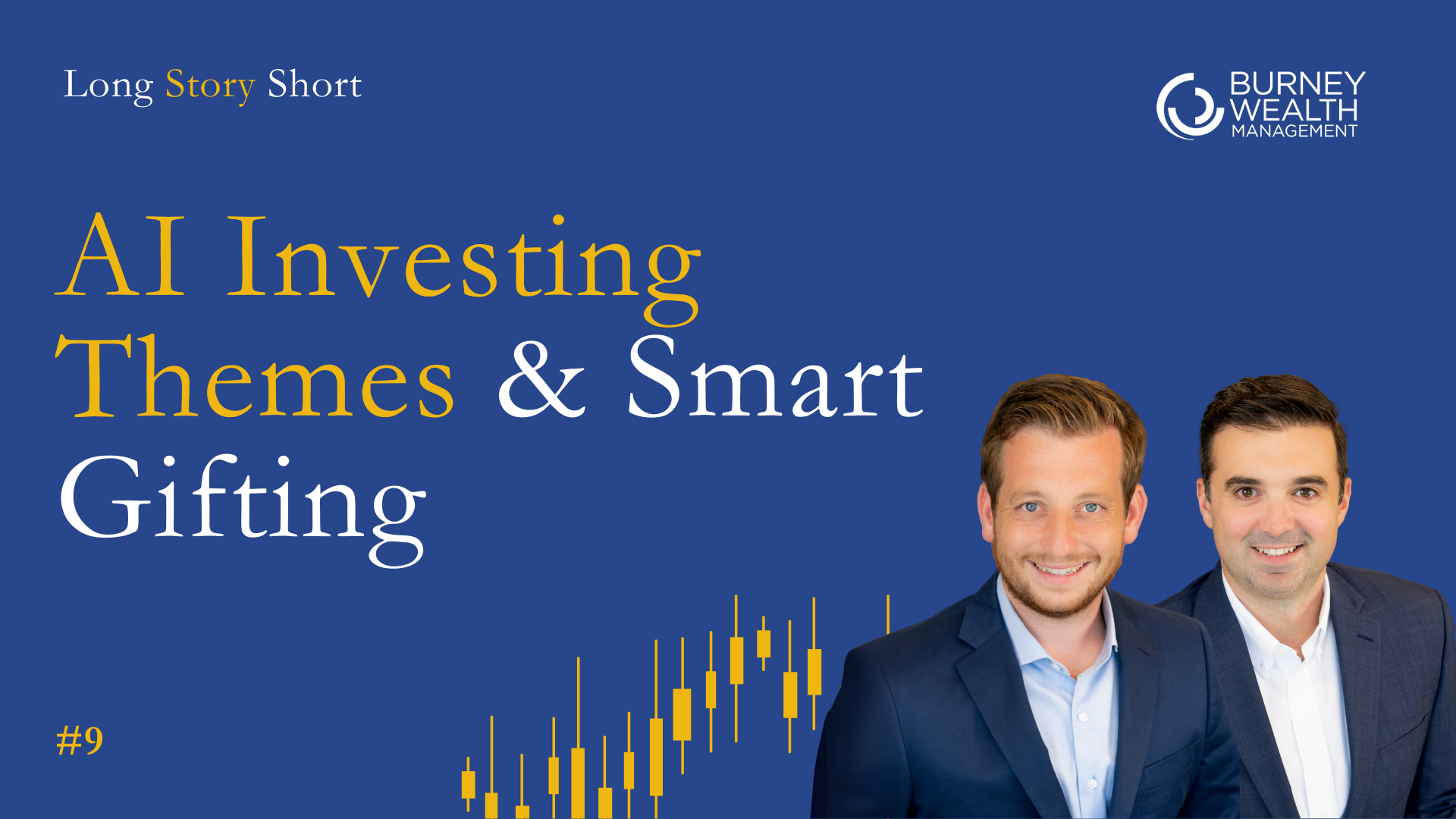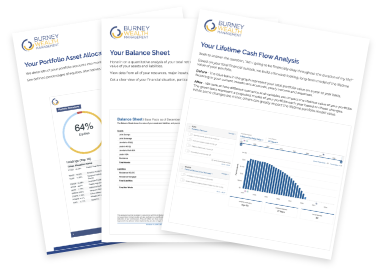AI Investing Themes and Smart Gifting Strategies | Ep 9

Watch or listen to the episode below:
The AI trade is back. Utilities companies are surging because data centers need electricity. Nuclear energy stocks are hot because of modular reactors. Everyone's looking for the next way to play with artificial intelligence beyond just owning Nvidia and Microsoft.
Andy has seen this movie before. And it usually doesn't end well.
The Theme Trap
Investment themes are seductive. They feel obvious. Of course AI will change everything. Of course data centers need power. Of course someone will make money building the infrastructure.
The problem isn't that the themes are wrong. It's that by the time regular investors hear about them, the easy money has usually been made.
Andy walks through the graveyard of “can't miss” investment themes. 3D printing stocks in the mid-2010s that went up like a mountain and came down just as fast. The clean energy boom and bust. The ARK Innovation fund where most investors lost money despite the fund's extraordinary early returns.
The pattern is familiar. Early adopters make money. Media attention builds. Regular investors pile in at the peak. The theme crashes or just slowly deflates as reality sets in.
You Already Own AI
Most investors likely already have significant AI exposure without realizing it. If you own an S&P 500 index fund, you own the companies spending heavily on AI development. If you own a diversified portfolio, you own the boring companies that will become more efficient as they adopt AI tools.
You don't need to invest heavily on specific AI plays. The benefits will trickle down to most of the economy eventually. The companies in your diversified portfolio will use AI to improve their operations, cut costs, and serve customers better.
That's an alternative and maybe better approach than trying to pick the specific winners in nuclear energy or data center construction.
When Themes Make Sense
This doesn't mean thematic investing is always wrong. But it requires discipline. If you want exposure to an investment theme, keep it small. A 1-2% position lets you participate without risking your financial plan if you're wrong.
Ask yourself: how much would I need to invest in this theme for it to really matter? And if I'm wrong, how would that impact my actual plans?
If the answer is “I'd need to invest 10-15% of my portfolio for it to move the needle,” that's probably too much risk to take on any single theme.
Family Gifting Fundamentals
The second half of the conversation shifts to family gifting strategies. This theme comes up with almost every client at some point, and there's a lot of confusion about the tax implications.
The good news: most people can gift significant amounts without any tax consequences. The federal lifetime gift and estate exclusion is nearly $14 million per person, rising to $15 million next year. For married couples, that's almost $30 million combined.
Unless you're approaching those numbers, gifting isn't a taxable event for you or the recipient.
Annual Exclusions
Each year, you can give $19,000 to as many people as you want without even reporting it. Married couples can combine their exclusions and give $38,000 per recipient.
If you give more than $19,000 to any one person in a year, you just need to file a gift tax return. That's not a tax bill. It is just a fling requirement. The amount you gifted counts against your lifetime exclusion.
Cash vs. Stock Gifting
Most people think gifting means writing checks. But you can also gift appreciated investments, and sometimes that's a smarter approach.
When you gift appreciated stock, the recipient gets your cost basis. If they sell, they pay the capital gains tax, but they might be in a much lower tax bracket than you. There's even a 0% capital gains bracket for people with lower incomes.
This works best when you're gifting to someone financially mature enough to handle investments and you want to rebalance your portfolio anyway.
Direct Payments to Institutions
One of the most powerful gifting strategies gets overlooked: direct payments to medical or educational institutions. These don't count against any of your gift limits.
Want to pay for a grandchild's college tuition? Write the check directly to the school. Need to help with a family member's medical bills? Pay the hospital directly. These gifts can be unlimited amounts and don't affect your annual exclusions or lifetime exemptions.
Teaching Moments
The biggest concern people have about gifting to younger family members is whether they can handle the responsibility. Money conversations might be uncomfortable, but they're necessary.
Some families add view-only access to gifted investment accounts. Others use the gifts as teaching opportunities about compound interest and long-term investing.
The goal isn't just to transfer money. It's to transfer financial knowledge and responsibility.
Balance Your Own Needs
All gifting strategies need to balance against your own retirement security. Start small and ramp up as you get comfortable. Once you see the positive impact on family members and confirm you're on track for your own goals, you can become more generous.
The best part of lifetime gifting versus estate planning? You get to see your family enjoy and benefit from your generosity.
Listen to the full conversation on Long Story Short:
The Burney Company is an SEC-registered investment adviser. Burney Wealth Management is a division of the Burney Company. Registration with the SEC or any state securities authority does not imply that Burney Company or any of its principals or employees possesses a particular level of skill or training in the investment advisory business or any other business. Burney Company does not provide legal, tax, or accounting advice, but offers it through third parties. Before making any financial decisions, clients should consult their legal and/or tax advisors.



